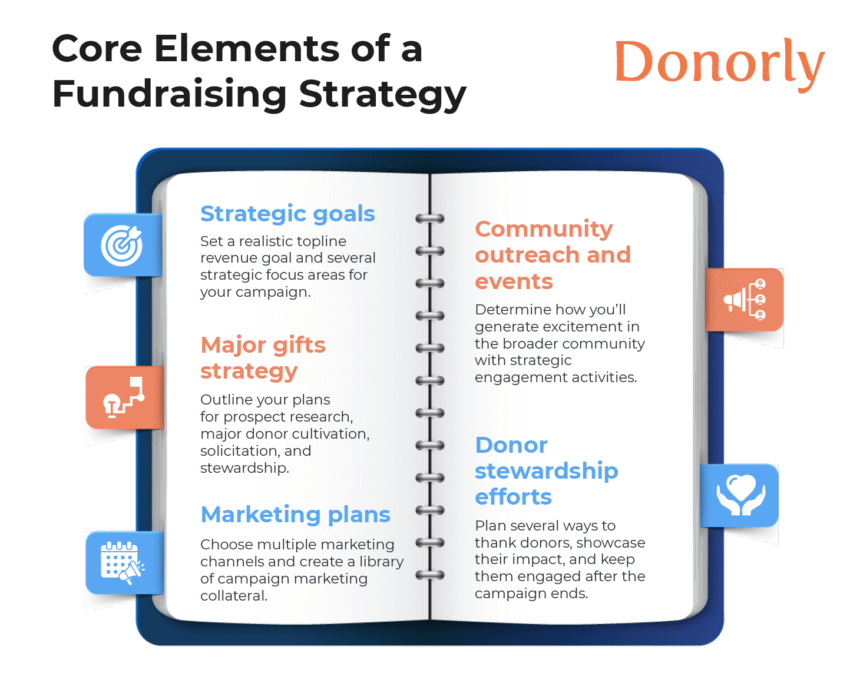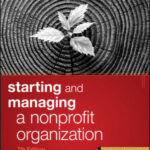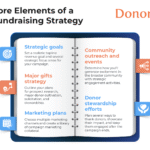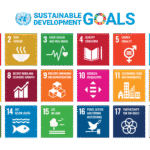Effective Fundraising Strategies for Nonprofits
Fundraising is the lifeblood of any nonprofit organization. Without proper funding, even the best causes struggle to survive. In this guide, we will explore effective fundraising strategies that can help your nonprofit raise the necessary funds while also building long-term relationships with your supporters.

1. Set Clear and Achievable Goals
The first step in any fundraising campaign is to define your goals. Without clear and measurable objectives, your efforts can quickly become scattered and ineffective. Whether you’re aiming for a specific monetary target or working to engage a certain number of donors, it’s crucial to set clear, realistic, and time-bound goals.
How to Set Fundraising Goals:
-
Define the purpose: Be clear about why you’re fundraising—whether it’s for a new project, a program expansion, or general operations.
-
Use SMART goals: Ensure that your fundraising targets are Specific, Measurable, Achievable, Relevant, and Time-bound.
-
Track progress: Continuously monitor your campaign to make adjustments as needed.
By setting clear goals, you provide a sense of direction for your team and inspire confidence in your donors.
2. Understand Your Donor Base
Before you can raise funds, you need to understand who your donors are. This is key to developing a successful strategy. Different donors are motivated by different things—some prefer large donations, while others are more comfortable with smaller, recurring gifts.
Ways to Understand Your Donors:
-
Segment your audience: Break your donor base into categories such as individuals, corporations, foundations, and government grants.
-
Use donor data: Analyze past giving patterns to understand what motivates your supporters. What are their donation habits? Do they prefer specific channels, such as online or offline giving?
-
Engage directly: Ask your donors about their preferences and reasons for supporting your cause.
Understanding your donor base ensures you can create tailored strategies that speak to their values and interests.
3. Leverage Online Fundraising Platforms
In today’s digital age, online fundraising platforms are invaluable tools for nonprofit organizations. These platforms allow you to reach a broader audience and make donating more accessible to potential supporters.
Popular Online Fundraising Platforms:
-
GoFundMe: A popular platform for personal and nonprofit fundraising.
-
Fundly: Known for customizable campaigns that allow you to tell your organization’s story.
-
Classy: Offers a range of tools for nonprofits, including event registration, peer-to-peer fundraising, and more.
Using these platforms can help you streamline donations and expand your reach beyond your local community.
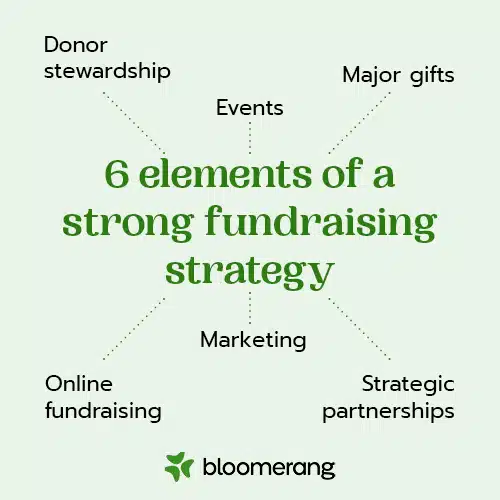
4. Host Fundraising Events
Fundraising events provide an opportunity to engage your community in person while raising funds for your cause. Whether it’s a gala, a charity auction, or a 5K run, events can generate significant donations while fostering a sense of connection.
Types of Fundraising Events:
-
Galas and Dinners: Formal events with dinner, entertainment, and speeches from key individuals.
-
Charity Auctions: Auctioning off donated goods or experiences to the highest bidder.
-
Peer-to-Peer Fundraising: Empower your supporters to raise funds by creating their own fundraising pages.
-
Online Events: Virtual galas, silent auctions, or webinars that allow people from anywhere in the world to participate.
Events can help you build brand awareness, engage with current donors, and attract new supporters.
5. Develop a Major Donor Program
While small donations can add up over time, large contributions can significantly impact your fundraising goals. A major donor program focuses on identifying and cultivating relationships with individuals who can make large gifts to your organization.
Tips for Developing a Major Donor Program:
-
Identify potential major donors: Look for individuals with a strong connection to your cause, previous large donations, or a capacity for greater giving.
-
Build personal relationships: Cultivate relationships with these donors through personalized communication, thank-you notes, and private events.
-
Offer recognition: Acknowledge your major donors publicly or privately, depending on their preference, to show your appreciation.
Major donors are often willing to contribute large sums because they trust your organization and believe in your mission.
6. Apply for Grants
Grants are a critical source of funding for many nonprofit organizations. Government agencies, foundations, and corporations offer grants to support various causes, from education to environmental conservation.
How to Secure Grants:
-
Research available grants: Use online databases like GrantStation or Foundation Directory Online to find grants that align with your mission.
-
Follow guidelines: Each grant application has specific guidelines. Ensure you tailor your proposal to meet the requirements of the funder.
-
Build relationships: Establish relationships with potential funders. This can increase the likelihood of future funding opportunities.
Grants require time and effort to secure, but they can provide substantial financial support for your programs.
7. Utilize Social Media Campaigns
Social media is an invaluable tool for reaching a large audience. With millions of users worldwide, platforms like Facebook, Instagram, and Twitter are excellent for spreading awareness about your fundraising campaigns.
Tips for Successful Social Media Fundraising:
-
Create shareable content: Design posts that encourage supporters to share your message with their networks.
-
Use hashtags: Hashtags can help increase the visibility of your campaign and allow others to find it easily.
-
Engage with followers: Respond to comments and messages to build relationships and trust.
Social media allows you to amplify your fundraising efforts, create viral campaigns, and engage directly with supporters.
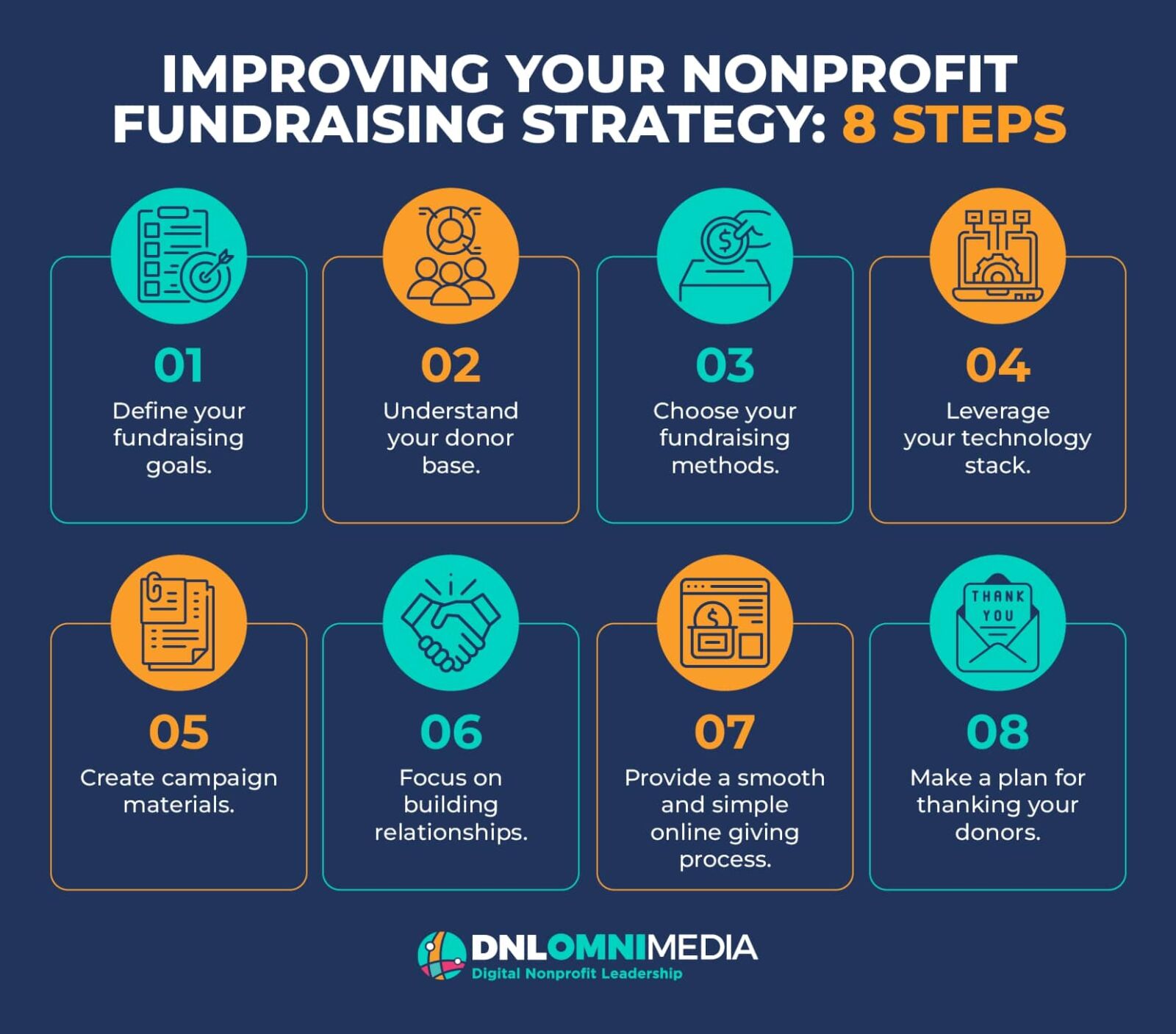
8. Establish Recurring Donation Programs
One of the most sustainable ways to fund your nonprofit is by encouraging recurring donations. This could involve setting up a monthly or annual giving program where donors commit to donating a fixed amount on a regular basis.
Benefits of Recurring Donations:
-
Steady income: Helps stabilize your cash flow, ensuring consistent funding for your programs.
-
Long-term relationships: Cultivates long-term relationships with donors, who feel more invested in your cause.
-
Less reliance on one-time donations: Reduces the need to constantly fundraise for short-term goals.
Encouraging your donors to set up recurring donations is an effective strategy for long-term financial sustainability.
9. Tell Your Story
One of the most powerful ways to raise funds is through storytelling. People are more likely to donate when they understand the impact of their contributions. Telling the story of your nonprofit and the people you serve helps create an emotional connection with potential donors.
Elements of a Compelling Story:
-
The problem: Clearly articulate the issue your nonprofit is addressing.
-
The solution: Show how your organization is working to solve the problem.
-
The impact: Share real-life examples of how donations are making a difference.
Sharing personal stories, success stories, and testimonials from those you’ve helped can inspire donors to take action.
Frequently Asked Questions (FAQs)
1. What is the most effective fundraising strategy?
The most effective strategy depends on your organization’s goals, audience, and resources. However, a combination of online fundraising, major donor programs, and events is typically a winning formula for success.
2. How do I engage younger donors?
Younger donors are often more inclined to engage through social media and online campaigns. Provide them with a way to be part of the cause through digital tools, such as peer-to-peer fundraising and crowdfunding platforms.
3. How can I track my fundraising success?
Use analytics tools to measure your fundraising success. Track donation trends, the effectiveness of campaigns, and donor engagement through your fundraising platform or by using software such as Bloomerang or Salesforce.
Conclusion
Developing a successful fundraising strategy takes time, effort, and creativity. By setting clear goals, understanding your donor base, and utilizing a mix of online platforms, events, and major donor programs, your nonprofit can create a strong foundation for financial stability and long-term success. Keep refining your approach, and always remember to engage and thank your supporters—they are the key to your success.
For more tips on fundraising strategies, check out our guide on nonprofit success.


